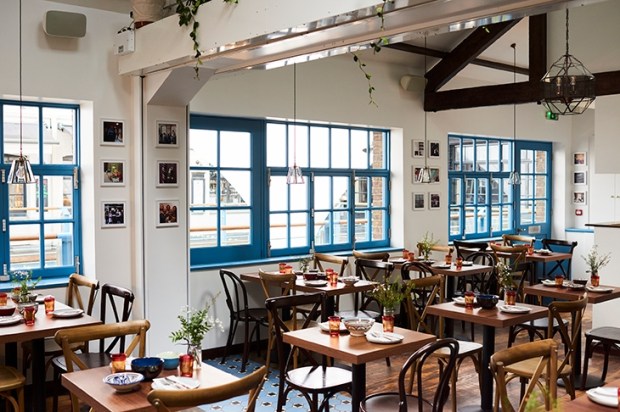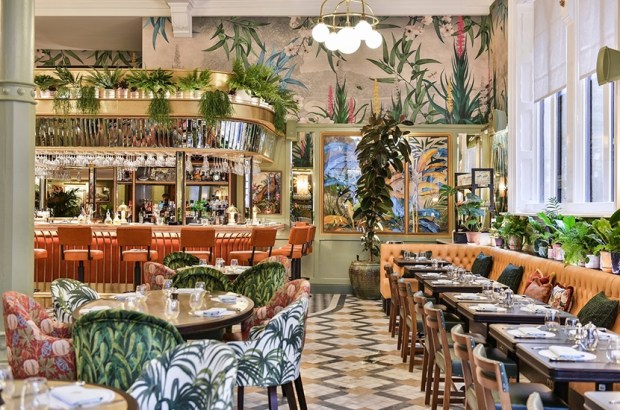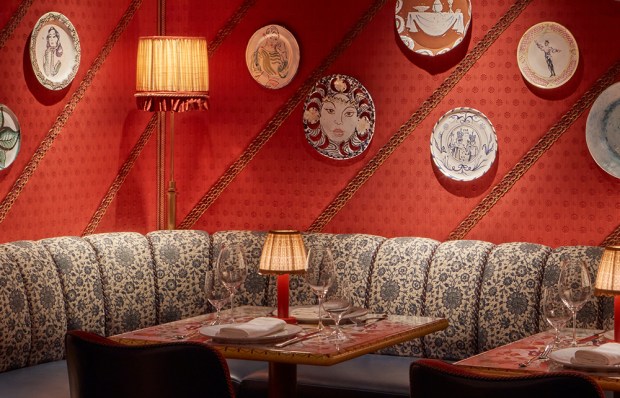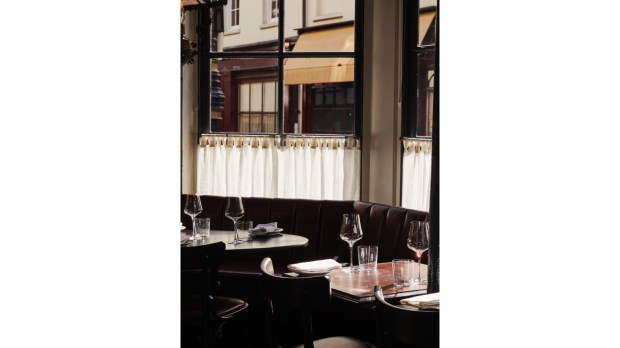Oxford is a pile of medieval buildings filled with maniacs, and is therefore one of the most interesting places on earth. It is easy to go mad in Oxford — it’s the damp — or grow other worlds, like John Tolkien, whose Middle Earth, I suspect, was largely an emotional defence against the conversation at High Table.
I found the cognitive dissonance between the landscape and its purpose so alarming, like finding David Cameron riding an Ent, that I went mad, and so know far less about Tudor foreign policy than I should. It was more awful than it sounds — that is youth’s anguish — and I could not, for years, visit Oxford. But I went last week, holding copy of Pevsner’s The Buildings of England: Oxfordshire as a comfort blanket. I have always loved the stones and feared the people. The birds aren’t worthy of the cage, said my friend, but he went to Magdalen.
The Chiang Mai Kitchen lives on Kemp Hall Passage, a medieval lane between the High (Street but why be prosaic when you can invent your own dialect?) and Blue Boar Street. There are pale, fashionable, excitable restaurants in Oxford, but I avoid them; who wants fashion in Oxford, whose most interesting times were pre-Wolsey? (Poor Christchurch. Everyone raves about Tom Quad — scale, mate — but since Wolsey fell before the cloisters could be added, they are technically raving about a building site. I have always liked Wolsey. I am glad he left a scar.) When I think of Oxford I do not think of the Brideshead myth, essentially well-executed bourgeois pain, which I can invoke without Waugh. I think, rather, of the Empress Matilda’s flight in the snow — misogyny c. 1142! — and that Adolf Hitler wanted to make Oxford his capital city. Invasion is a quite novel way to get in.
I go to the Chiang Mai Kitchen because I have always gone there, and because the Taj Mahal on Turl Street (founded 1945), which I adored, is now the Turl Street Kitchen; and the Covered Market, though charming, smells of dead geese and sawdust; and because I cannot eat at the (Ke)Bab Van on the High (Street) without drinking a pint of whisky, if it even exists any more. This house was once called Kemp Hall. It looks medieval (plaster, timber, gables) but claims to be dated 1637. It overhangs the passageway like a fire hazard inhabited by a rich witch. But that is Oxford. It looks fantastical, but it is really methodical. The beauty is a hoax; and that is why writers who found themselves in Oxford created Alice and Galadriel and the pompous talking lion. They were venting, and seeking. ‘Oxford is very pretty,’ said T.S. Eliot, ‘but I don’t like to be dead.’ That is not how non-Oxonians feel. The Inspector Morse franchise, which imagines sudden death at every turn for Oxonians, is almost the most successful franchise Oxford has produced. More venting, more seeking.
The interior is soothing, and lovely: pale walls, dark beams, an ancient red-brick fireplace with no fire. But that is typical. I eat with my former tutor, a brilliant modernist whose phlegmatic response to Jeremy Corbyn’s leadership of the Labour party I could not tolerate from anyone else. But he was never a neurotic; who needs neurotic historians? There is, too, a fellow pupil in whose 14th-century rooms I listened to opera and had my calmest hours in Oxford. We eat chicken with cashew nuts and chilli; prawns with garlic pepper and coriander; battered king prawns; chicken and coconut soup; battered squid. It is all fine and lovely; this will always be my favourite restaurant in Oxford. My friend and I sleep in squalid rooms at Magdalen; at dawn, we flee.
Got something to add? Join the discussion and comment below.
Get 10 issues for just $10
Subscribe to The Spectator Australia today for the next 10 magazine issues, plus full online access, for just $10.
You might disagree with half of it, but you’ll enjoy reading all of it. Try your first month for free, then just $2 a week for the remainder of your first year.















Comments
Don't miss out
Join the conversation with other Spectator Australia readers. Subscribe to leave a comment.
SUBSCRIBEAlready a subscriber? Log in